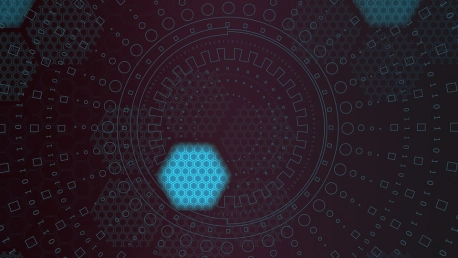Many aspects of modern life have been digitized, yet elections seem to be lagging behind. Even though e-voting is considered a promising venture, the concern regarding the cybersecurity issues it poses is quite powerful.
So powerful, in fact, that it turns many individuals away from the entire idea. However, there is a promising solution to the vulnerability of the typical e-vote: blockchain voting.
What Is Blockchain?
In essence, a blockchain is a chain of blocks, where each block is composed of digital information. They’re like storing boxes for:
- Transaction information regarding date, time, and amount spent
- Those participating in the transaction
- Information unique to each block, called a hash
For a block to be added to the chain, four things must first happen:
- A transaction
- A verification of that transaction, done by a network of computers
- The transaction has to be “placed” in a block for storing
- The block has to receive a hash
Once added to the chain, the information on it is made public, meaning that anyone can see it. Now, there’s no need to worry, because the identity is not made public. The only personal information that will be made visible is your username or digital signature, thanks to a digital key that is created in order to keep the rest of your personal information safe.
How Does Blockchain Voting Work?
According to The Conversation, the first step entails a verification of the voter’s identity. For that, a photo of a government-issued ID needs to be uploaded, followed by either a video or a photo of that person, which is checked by facial recognition software. Once the system confirms the validity of the ID used, the user is considered eligible. This entire first part is done entirely without the help of blockchain technology.
The next part is where blockchain steps into the spotlight. As the European Parliament explains, in regular, in-person voting, the votes are taken care of by a central authority. With blockchain, however, the processes of recording, managing, counting, and checking are all completed by the voters themselves, or rather, their computers. Just like with regular blockchain, a copy of the record is held by each voter. This means that any new list is verified against the implemented set of rules.
For the process to work, each voter would have to be given a “wallet” (in this case, a user-credential), and one “coin” that they can use to vote. In order to cast a vote, they would have to transfer the said coin to their chosen candidate’s wallet.
The Benefits
More People Are Likely to Vote
Arguably one of the biggest benefits of blockchain voting would be an increase in voting overall. According to FairVote, about 60% of the population that’s eligible for voting actually votes during presidential elections, and 40% during midterm elections. There are many reasons some choose to stay silent, including lack of interest, knowledge, or ability.
While for those who are uninterested there may not be much to do, for those who want to but can’t vote, blockchain may open up a world of possibilities. Regardless of whether they are physically disabled or simply out of the country (like some uniformed service members), offering simpler means of carrying out their citizen duty may result in boosted voting engagement.
Improved Transparency
Currently, there’s no way for us to really know what happens to our vote once it’s cast. We hope that the poll workers will count it correctly, but we can’t check whether they did. Blockchain, on the other hand, allows you to track your vote while also ensuring that it goes where it’s supposed to.
Lowered Instances of Election Fraud
This stems directly from the benefit of improved transparency—everyone can see what happens to their vote, making the likelihood of election fraud decrease drastically. This is an especially burning matter in countries with dictators, and could be of great help if this kind of technology were to become an international standard.
Real-Time Tally
Since everyone will know at all times where their votes are going, it will be much easier for an entire country to know exactly who’s winning at a certain point in time. Thanks to this, even the final results will be made known in a matter of moments, shortening the entire waiting period.
The Problems
Susceptibility to Electricity Mishaps
The city council election in Moscow, Russia, held on September 8, 2019, was carried out with the help of blockchain technology. However, an outage made it impossible for some individuals to vote, prompting one candidate to claim that the glitch was the cause of his inability to vote. This instance reveals one of the biggest problems with this type of voting.
No Way for Experts to Observe Irregularities
Even experts don’t have a definitive answer to how this type of voting could be observed for irregularities. While each individual may be able to check whether their vote went where it was supposed to, if it didn’t, there wouldn’t be any way to prove it. In addition, there is no right way for an expert to observe the overall process, the same way he or she could with a traditional election.
Large Computing Power Required
Remember the digital key used to keep information about blockchain users safe? Well, the more complex the key is, the harder it becomes to hack, which is crucial for keeping the identity of each voter protected.
However, the more complex the key is, the more computing resources it requires, which means more money spent. The costs associated with enabling such resources make this type of voting inefficient for large populations (like those of California and Texas).
Government-Issues IDs May Be Old
Another issue that’s unrelated to the technology of blockchain, but concerns the process of verifying users’ IDs, is that government documents—and by extension, their photos—may be outdated or old. In this case, facial recognition systems will fail to do their job.
Now that you’ve seen both sides of the coin, you can decide for yourself whether blockchain voting is indeed the next best thing, or we should just forget about it and go back to our current election methods.









